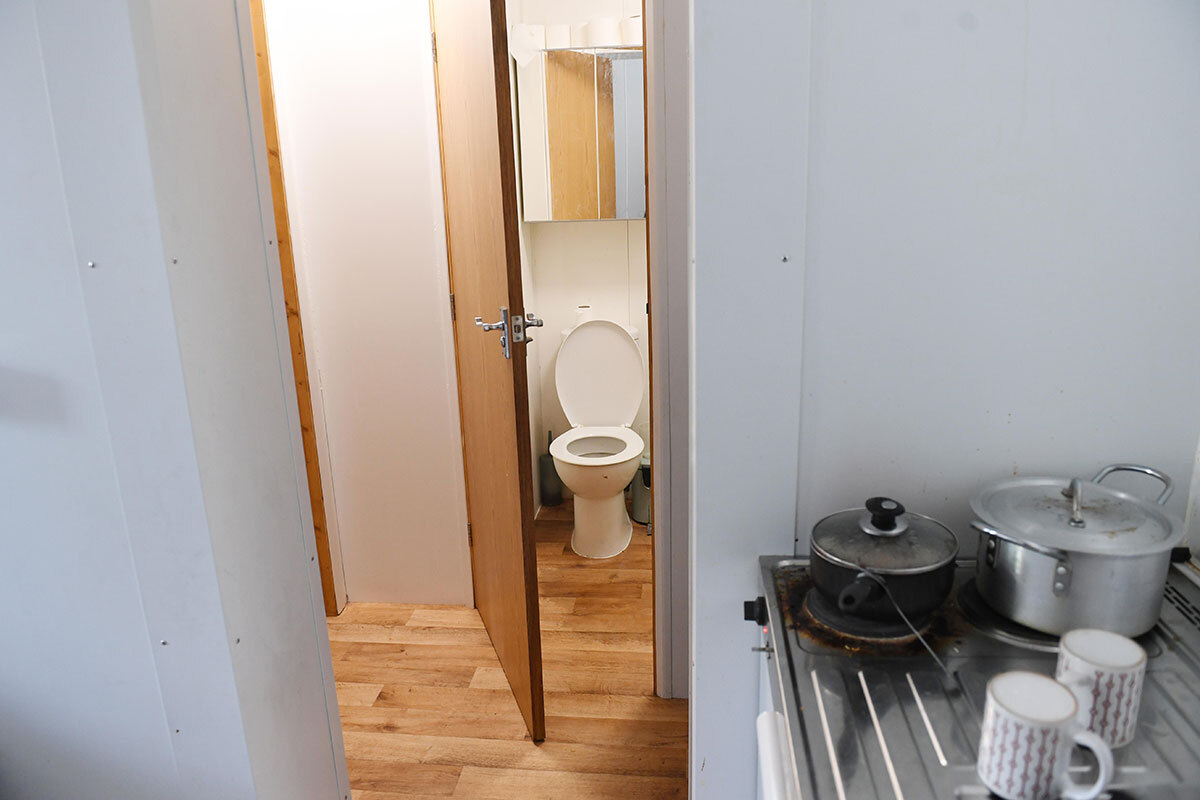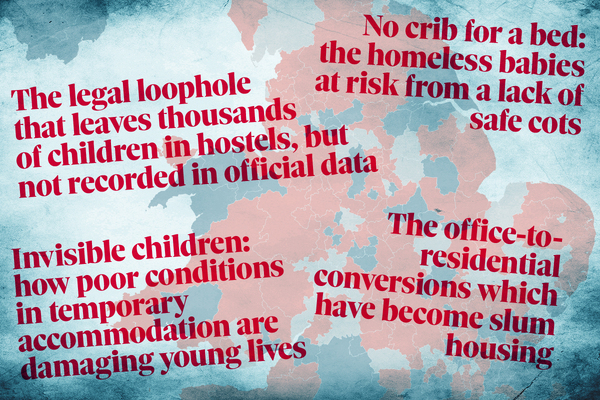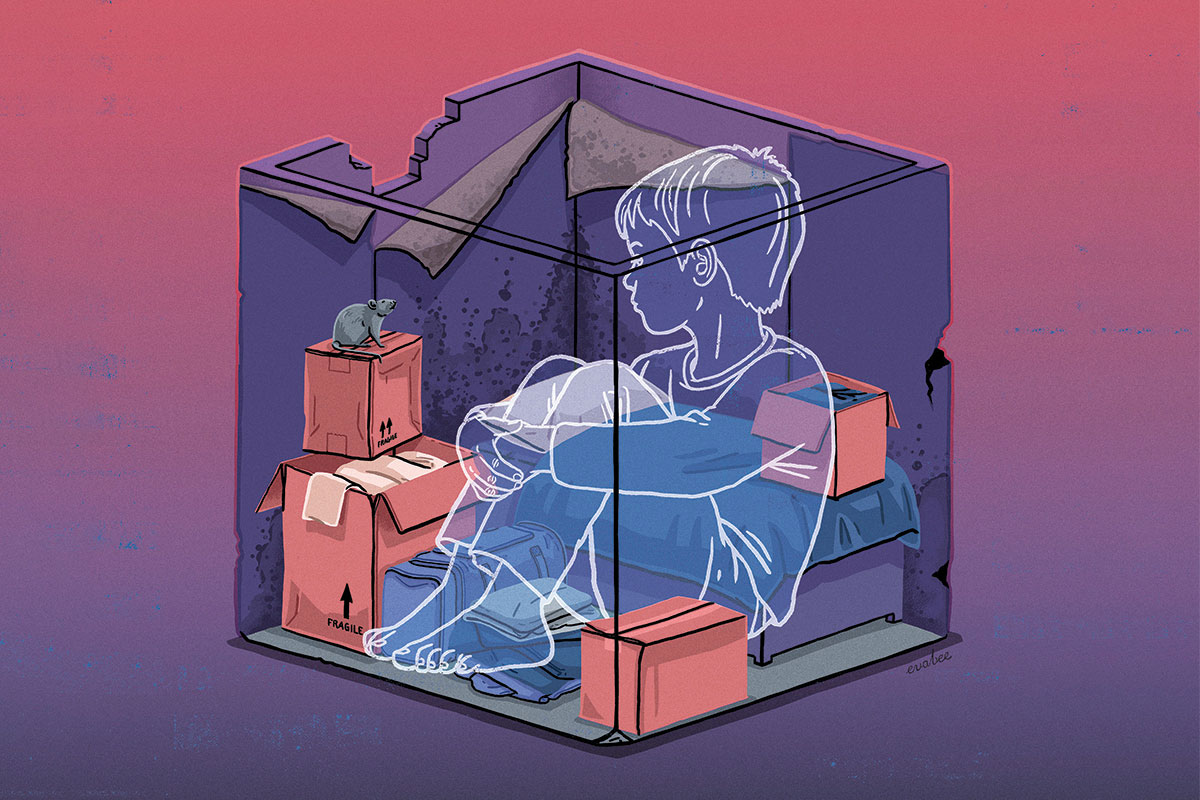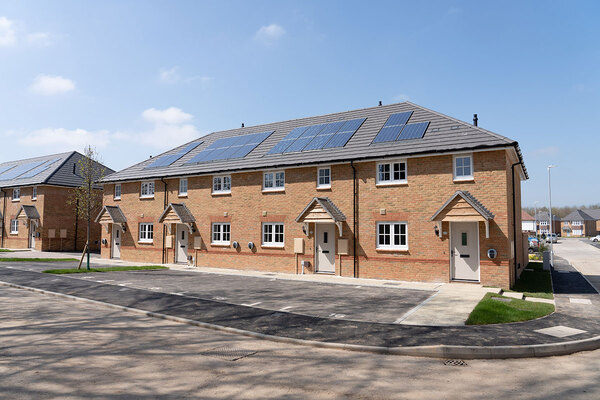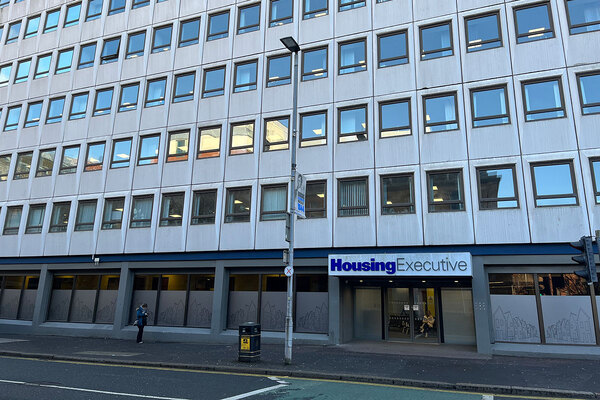You are viewing 1 of your 1 free articles
Sector sounds alarm over sharp rise in children staying in temporary accommodation for more than five years
Charity and housing sector figures have called for urgent government action after latest figures showed a sharp rise in the number of families with children staying in temporary accommodation, some for more than five years.
A total of 74,530 households with children were in temporary accommodation in England as of 31 March this year, the annual statutory homeless figures revealed.
This represented a rise of nearly 15% year on year.
The survey also showed that the number of children who have been in temporary accommodation for more than than five years has risen to 16,790, up nearly a quarter from 13,530 the year before.
John Glenton, executive director of care and support at large national housing association Riverside, said the figures are “very worrying”.
He added: “These children are now spending around a third of their entire childhood living in temporary accommodation rather than a permanent family home. This is not acceptable in one of the world’s richest nations.
“It is now crucial to focus on solutions and work with the government to end this national scandal and international embarrassment.”
Overall there were 117,450 households in temporary accommodation as of March this year, an increase of 12.3% on the previous year.
The figures also showed that the number of households facing homelessness was 324,990, up 8% year on year. The figure is a new high, according to homelessness charity Crisis.
Matt Downie, chief executive of Crisis, said: “The need to tackle homelessness and start building the social homes we need has never been more urgent.
“To see proof that we have tens of thousands of families spending years of their lives trapped in unsuitable temporary accommodation like mouldy B&Bs, which are damaging their children’s health and robbing them of life experiences like having friends over to play, is heartbreaking.
“Unless we take a different approach, this will become the reality for generations to come.”
The most common reason for people becoming homeless was the end of assured short-hold tenancies.
The number of single households citing the end of private rented tenancy increased by 6% to 24,470 for those owed a prevention duty. For those owed a relief duty, the figure increased by 37% to 13,410.
Darren Baxter, principal policy advisor at charity the Joseph Rowntree Foundation, said: “Today’s statistics show that last year, more families experienced the trauma of homelessness, many as their private rented tenancies came to an end.
“Moving from fixed-term tenancies to periodic tenancies will end the insecurity that’s currently baked into the system. But to truly give private renters the security they need, the Renters’ Rights Bill must make sure that no-fault evictions can’t happen by the back door.”
The government is pushing ahead with its commitment to end Section 21 no-fault evictions through the Renters’ Rights Bill unveiled last month.
These are the latest figures since the recent government announcement to prioritise veterans, care leavers and domestic abuse survivors for social housing.
The number of young care leavers aged between 18 and 20 who are homeless has increased by 54% over the past five years.
A total of 4,300 care leavers aged between 18 and 20 were assessed as homeless in the past year – up from 2,790 in 2018-19.
Katharine Sacks-Jones, chief executive of Become, the national charity for children in care and care leavers, said: “The stark reality of more care leavers becoming homeless is that society is failing these young people.
“Each year, thousands of children move out of their foster or children’s homes at the age of 18, sometimes younger, and are forced to become independent overnight.
“Many young people are sofa surfing, living in hostels or unsuitable accommodation where they don’t feel safe, struggling to stay afloat with little support.”
The biggest rise in the reason for people becoming homeless was asylum seekers having to leave Home Office accommodation, with 3.420 households in this category, a year-on-year rise of 148%.
Another large increase was seen among people owed a prevention duty due to rent arrears following an increase in rent. This applied to 590 households, up 97% year on year.
Sign up for our homelessness bulletin
Already have an account? Click here to manage your newsletters
